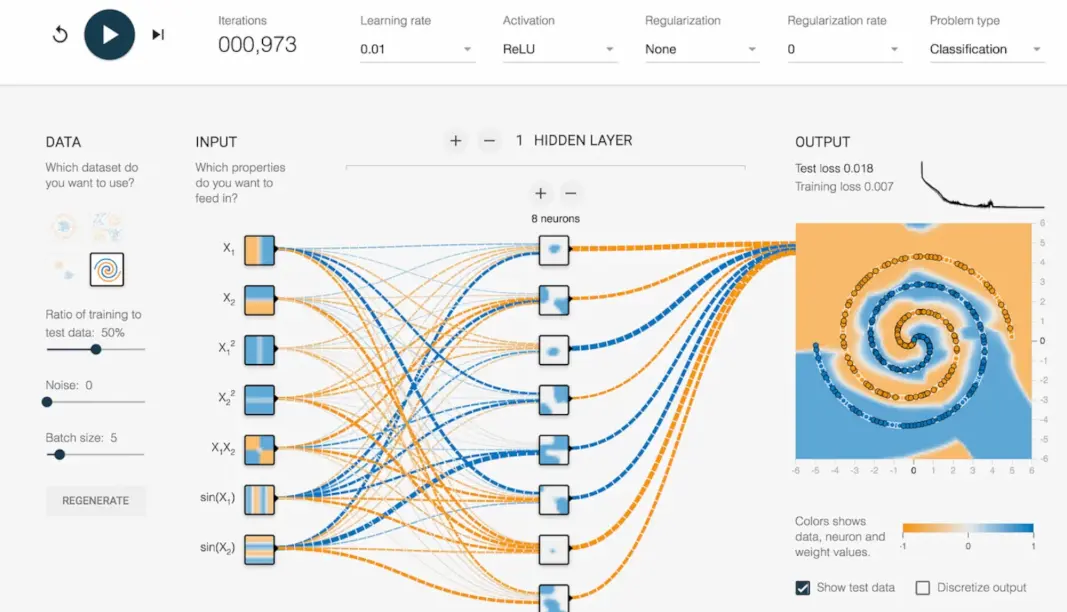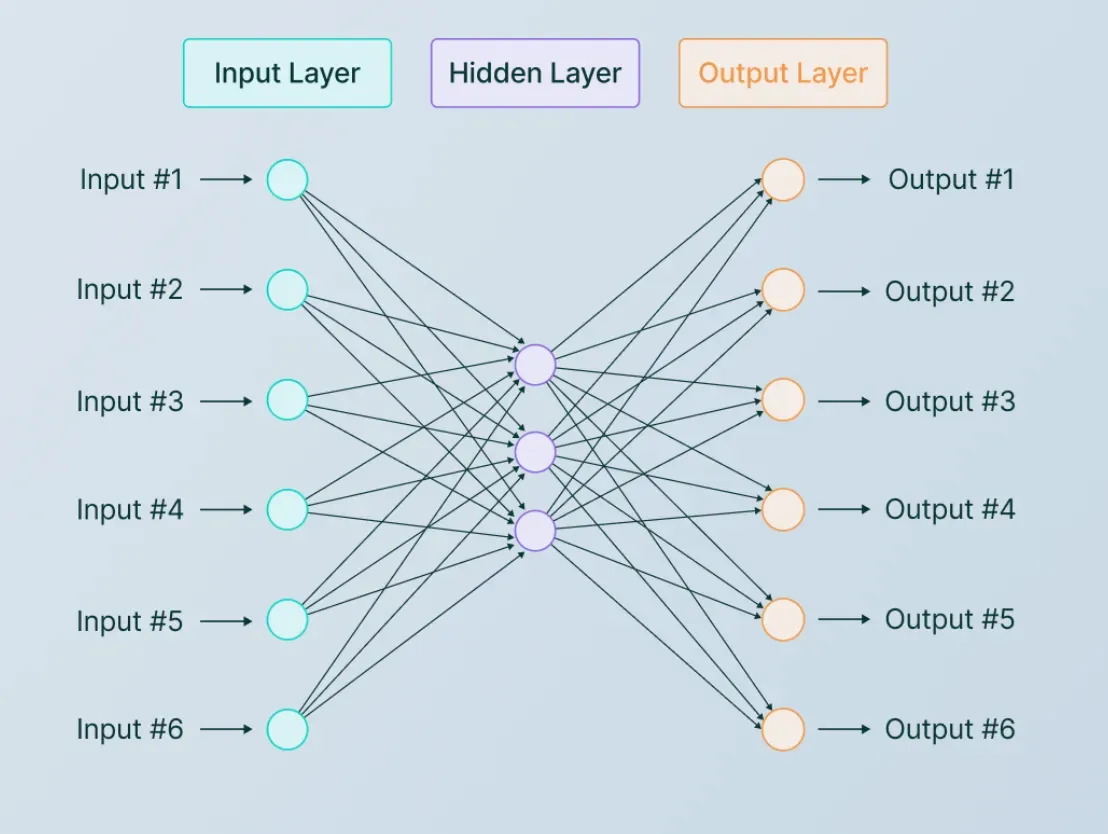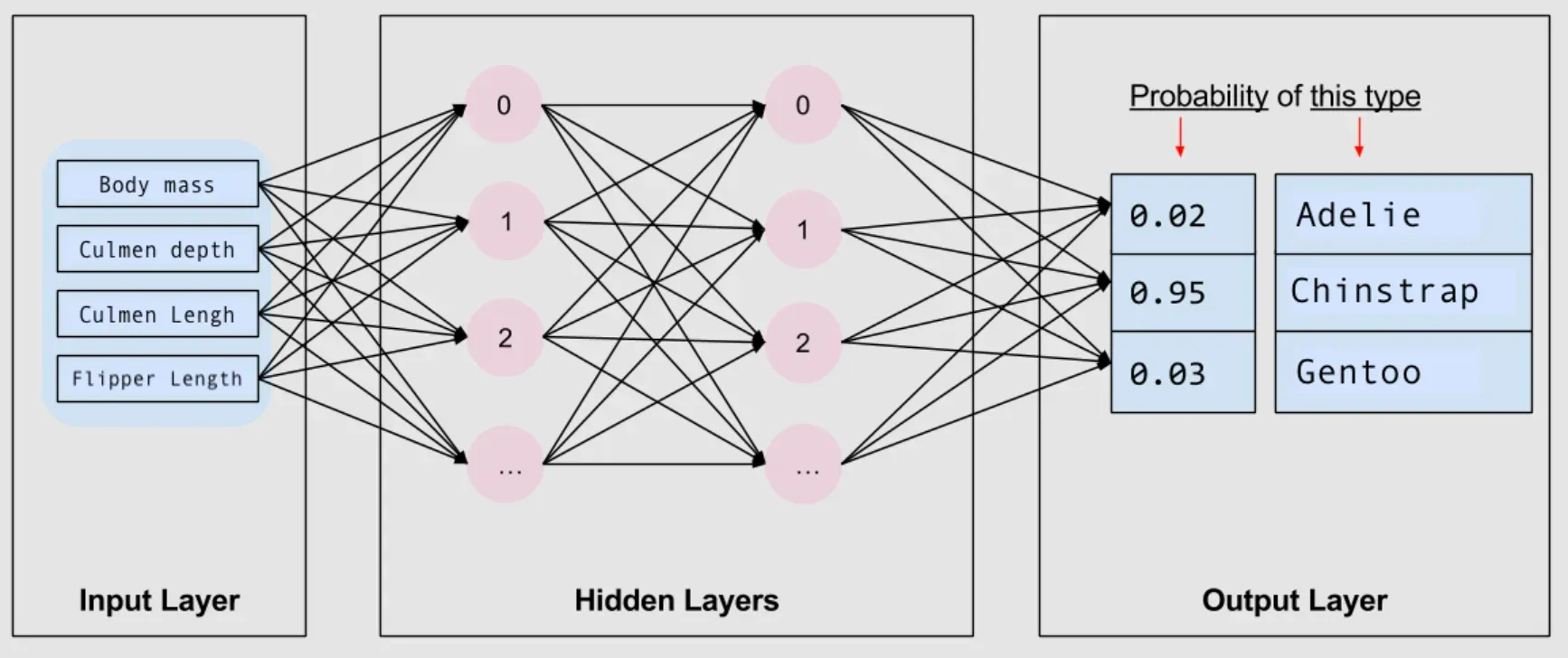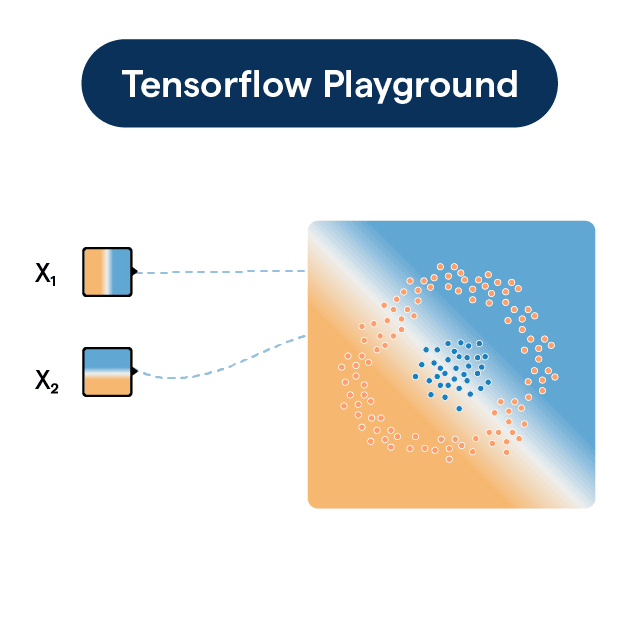What is TensorFlow Playground?
Tensorflow Playground is an interactive visualization of neural networks, designed with a user-friendly interface. It offers an excellent platform to experiment with, learn, and understand neural networks and their working. It's like building a sandcastle of understanding, sans any programming or installation hassles.
On the left section, you'll find settings related to dataset, features, hidden layers, and learning rate. The right side showcases an actual visual representation of the neural network functioning. Color-coded outputs, neurons, and connection lines help navigate this remarkable interface.
Available Datasets
Various preset datasets are available, ranging from simple linearly separable data to more complex and challenging datasets. Each dataset offers its own learning challenge and helps you fathom the power and limitations of neural networks.
Real-time Functionality
Tensorflow Playground displays the neural network's workings in real time. This means you can witness the network learn, make mistakes, and ultimately improve, all in a flash of colors, numbers, and neurons.
Working with Tensorflow Playground Features

To start, TensorFlow Playground includes predefined features such as X1, X2, X1^2, X2^2, X1X2, and Sin(X1 and X2). These features offer a range of complexity, enabling experimentation with simple linear separation or more convoluted decision boundaries.
Custom Features
Tensorflow Playground also allows you to test the effect of including/excluding different features, thereby assessing their impact on the model’s performance. This is a great way to experiment and explore how feature selection affects outcomes.
High Dimensional Features
In higher-dimensions, understanding what the network perceives becomes tricky. However, with its interface of configuring features, Tensorflow Playground helps in visually interpreting high-dimensional space and the role of different features in such a context.
Data Normalization
Understanding the significance of data normalization is key in machine learning, and TensorFlow Playground's feature interaction facilitates this. The normalization process, which involves scaling features to a common range, can drastically impact a model’s performance, a principle which becomes visually interpretable here.
The Neural Architecture

How deep your neural network should be? Tensorflow Playground gives you the power to control the architecture of your neural network by allowing you to add or remove layers, helping you understand the effect of depth on learning capability.
Neurons per Layer
The number of neurons in each layer is another determinant of the network’s complexity. Experiment with varying numbers to visually understand how they impact the learning process, only with the help of Tensorflow Playground.
Activation Functions
Different activation functions can be applied to the hidden layer neurons such as Linear, Tanh, ReLU, etc. Understand the functionality and impact of these functions as they play a pivotal role in forming decision boundaries in the dataset.
Epochs and Errors
See every single epoch of training in action or skip the steps as per the learning rate slider. Witness the network’s path to minimizing error graphs over time. It's an exciting journey to watch the model evolve and adapt in real-time.
Learning from Training

Train your models and experience the pitfalls of overfitting when the model becomes too complex. With Tensorflow Playground, you will develop an intuitive understanding of how to strike a balance between underfitting and overfitting.
Regularization
Regularization techniques are a significant factor in preventing overfitting. Witness their impact on your dataset and model behavior using TensorFlow Playground's L1 and L2 Regularization.
Learning Rate Dynamics
Manipulate the learning rate to observe its impact on the training process. The step-by-step visualization aids in discovering how a large learning rate leads to erratic model behavior, while a small learning rate may cause the model to learn too slowly.
Contact with Neural Noise
Introduce noise into your experiments and observe how your neural network copes against it. This experience will give valuable insight into the robustness of different architectures and settings.
Advancements with TensorFlow Playground

Deeper Neural Networks
Experience the power of deeper networks and comprehend why deep learning has become a fundamental part of modern machine learning.
Access to Open Source Code
TensorFlow Playground is an open-source project hosted on GitHub, allowing you to dive even deeper into its underlying code, if you want to explore beyond the surface.
Swift Playground Interactions
In TensorFlow Playground, the simulation of the neural net is quick, aiding time-efficient experiments. You will find this feature especially handy when mentoring or learning in a group setting.
Omnichannel Learning
TensorFlow Playground supports a seamless, device-agnostic learning experience. Learn machine learning and neural networks anytime, anywhere, on any device.
Frequently Asked Questions (FAQs)
What is Tensorflow Playground?
Tensorflow Playground is an interactive web interface developed by the Tensorflow team for understanding neural networks visually, especially Deep Learning concepts.
What can I do with Tensorflow Playground?
Tensorflow Playground allows you to create your own neural network or modify existing ones, change features, adjust various parameters, introduce regularization, and observe the network's learning process.
What benefits can I get from Tensorflow Playground?
Tensorflow Playground helps simplify complex machine learning concepts, such as feature selection, neural architecture, training strategies, and overfitting, by presenting them visually.
Do I need any programming skills to use Tensorflow Playground?
No, one of the advantages of TensorFlow Playground is that it requires no code at all. You can experiment with neural networks using an intuitive web interface.
Where can I access Tensorflow Playground?
Tensorflow Playground is freely accessible online, meaning you can use it anytime and anywhere. You can find it here.

